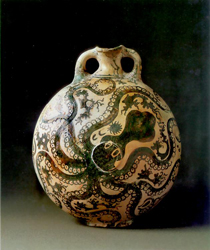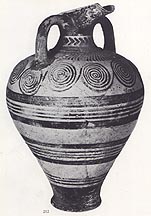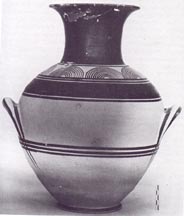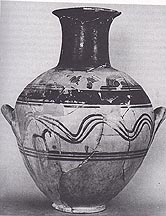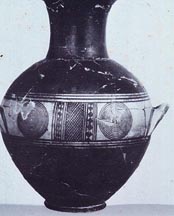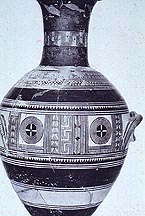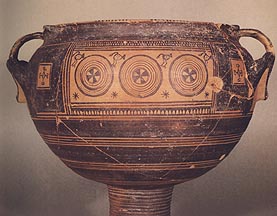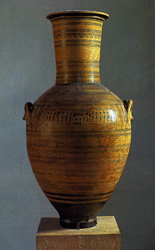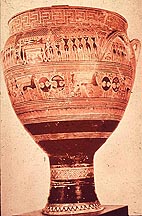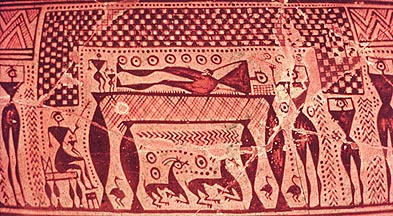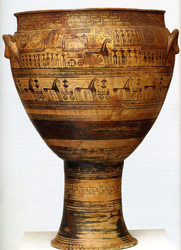Art Home | ARTH Courses | ARTH 209 Home | ARTH 209 Assignments
The Development of Geometric Vase Painting
Scholars have examined the transformation of vase painting from the late Mycenaean period to the Geometric period as an important link between these two periods. The following are samples to illustrate the major stages in this transition. Examine them and note what you consider to be significant changes that you observe in this sequence. Note the changes in the shape of the vases and decoration.
Octopus Vase (Marine Style), c. 1500 BCE (Minoan)
Late Mycenaean Amphora, c. 1300 B.C.
from Grave Goods found at Koropi in Attica.
Proto- Geometric( c. 1050-900 B.C.) Belly Handled Amphora, c. 975 B.C.
from Attica
Proto-Geometric belly handled amphora. c. 975-950 B.C.
Late Proto-Geometric Belly Handled Amphora, c. 925 B.C.
Early Geometric Belly-Handled Amphora , c. 850
Funerary Urn for Woman, found at Kerameikos
Early Geometric Krater, c. 800.
Map of Ancient Athens.
Late Geometric I Belly - Handled Amphora, 5' 1", c. 750.
Grave Marker for Athenian woman; found at the Dipylon Cemetary
Late Geometric I Dipylon Krater, c. 750.
Grave marker for Man; found at the Dipylon Cemetary
Detail of Prothesis Scene from the Dipylon Krater.
Dipylon Krater with the scene of an ekphora, or funerary procession to cemetary, 4' tall, c. 750 BCE
Late Geometric Krater with possibly a scene of Paris abducting Helen, c. 730 BCE.
Late Geometric IIOinochoe (wine jug), c. 725 B.C
Neck has scene of shipwreck (Odysseus ?).
